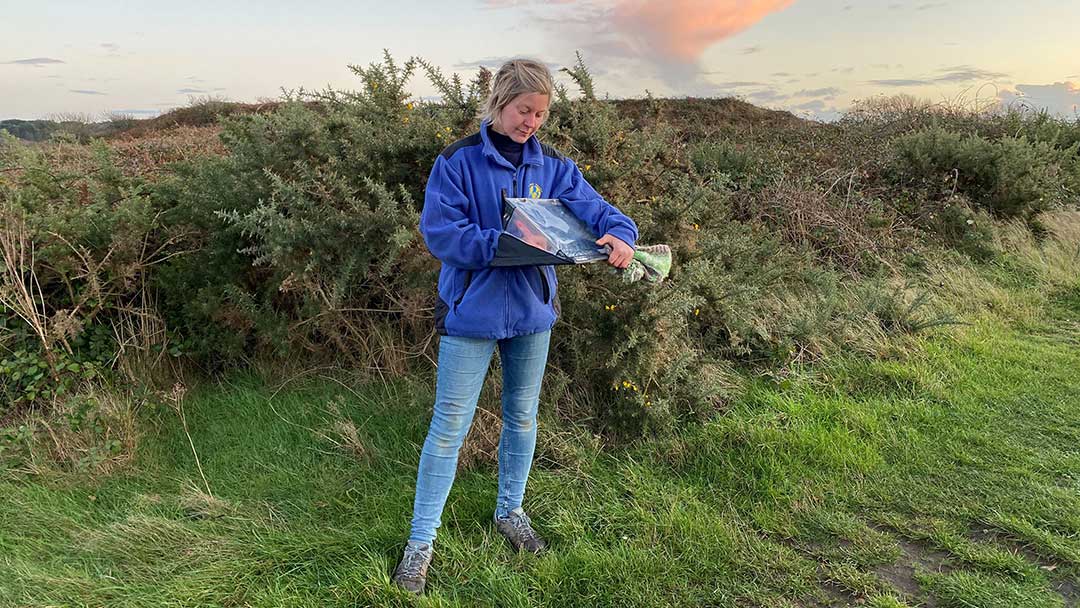MONITORING
Monitoring is carried out to identify heaths at risk from urban pressure, target mitigation work, establish baseline data for visitor use and gauge opinions on heathlands as well as provide information to allow continuous assessment of the Dorset Heaths Partnership (DHP) project.
The monitoring is carried out in the following ways:
Bird distribution and breeding bird surveys
The RSPB carry out scientific bird distribution and breeding bird surveys across the Dorset heaths to gain an understanding of the impacts of recreational activity on breeding success and population. Footprint Ecology prepare the monitoring strategy for the Dorset heathlands to work towards.
Incident Recording
DHP has an incident database that records damaging activities such as heath fires, motor vehicle trespass and ramp and den building on Sites of Special Scientific Interest. The incident database is on the Dorset Explorer Geographic Information System.
Fires recorded on Dorset Explorer are cross referenced by the senior warden with the heath fire database maintained by Dorset Environmental Records Centre (DERC). This ensures both sets of information are correct. Dorset & Wiltshire Fire and Rescue Service (DWFRS) notify DERC of any fires on heaths.
Automated Visitor Counters
A network of automated visitor counting sensors have been established across the DHP area. There is a combination of recognised visitor monitoring methods in use. Different types of sensors include pressure pads, infra red beams and induction loops.
The sensor data is used to record numbers of visitors, identify trends of visitor behaviour and site usage across the south east Dorset heathlands.
Car Park Counts
Simultaneous (snap shot) counts are coordinated for two hour periods at a chosen time at all the identified heathland parking areas. The counts gather information on how many cars are at each location and provide a simple measure of use. There are 14 coordinated counts organised per year.
Random counts are also carried out by DHP wardens who count cars at any parking area they visit within their working day.
Site User Surveys
Site user surveys are carried out to find out who visits the heaths, why, what they do, where they go and how and where they are travelling from, and their opinions of the sites.
The first survey results were collated by Natural England and Footprint Ecology. DHP carry out this type of monitoring for partners who need to monitor success of Dorset Heathland Planning Framework (DHPF) funded projects.

SANG MONITORING
Suitable Alternative Natural Greenspaces (SANGs) are designed to provide alternative greenspace and to divert visitors from the Dorset Heaths SPA.
SANGs can be strategic or development-linked and are designed to mitigate against the potential increased pressure on the SPA that may arise from new housing development.
In line with the DHPF, SANG monitoring should be established to inform delivery and allow for adjustments as well as demonstrating the SANGs functionality and use by existing local residents. DHP staff work with land owners and developers to carry out monitoring on SANG sites by using a combination of the following methods: installation of remote people counting sensors, on-site visitor questionnaires, observational surveys and car park monitoring. Information and data collected from on-site visitor questionnaires is then summarised and presented in a report.
Wildlife and Habitat Recording
The DHP monitoring and wardening team assist partners as required with all recording of wildlife and habitat information for sites within their area.
Amphibian and Reptile Conservation Trust (ARC) provide the necessary training and licences for DHP wardens to permit them to collect reptile data. Records are collected across the whole Dorset Heaths Partnership area. These records must be submitted to ARC annually for addition to the database and for inclusion in licence returns to Natural England. Persons acting as accredited agents under ARC’s protected species licence and not submitting records will not be relicensed.
Standardised survey and recording methods are being developed to facilitate data exchange across the partnership and to monitor the effectiveness of the Interim Planning Framework.
